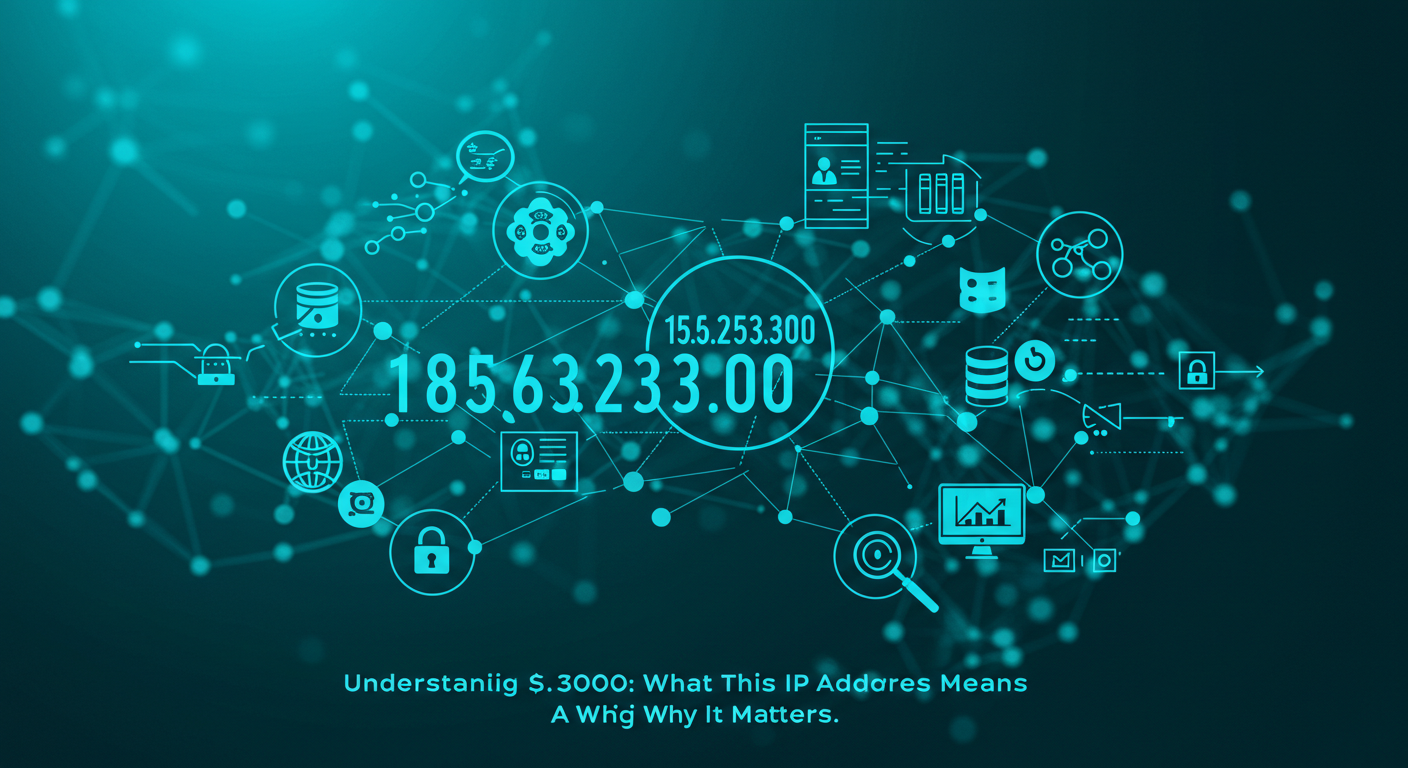In the vast digital landscape, IP addresses like 185.63.253.300 play a crucial role in enabling communication between devices across the internet. Whether you’re troubleshooting network issues, studying cybersecurity, or simply curious about how the web functions, understanding an IP address can be incredibly valuable. In this article, we’ll dive deep into what 185.63.253.300 is, what it represents, and how such addresses are used in modern networking.
What Is 185.63.253.300?
At first glance, 185.63.253.300 appears to be a standard IPv4 address. IPv4 (Internet Protocol version 4) uses 32-bit addresses composed of four octets separated by periods. Each octet can range from 0 to 255. However, if we take a closer look, 185.63.253.300 is not a valid IP address—and here’s why.
Invalid Octet
The last segment in the address, “300”, exceeds the maximum allowed value of 255 for any octet in an IPv4 address. This means that 185.63.253.300 is technically an invalid IP address, and cannot be assigned to any device or server on the internet or a local network.
Understanding IP Address Structure
To fully grasp why 185.63.253.300 is invalid, let’s look at how an IP address is structured.
-
An IPv4 address consists of four numbers (octets), separated by dots.
-
Each octet must be in the range 0 to 255.
-
This gives about 4.3 billion possible unique addresses in the IPv4 space.
So a valid example would be something like 185.63.253.200—note that all segments fall within the acceptable range.
Common Uses of IP Addresses Like 185.63.253.300 (Mistyped)
While 185.63.253.300 itself is not usable, mistyped or invalid IP addresses are frequently encountered in the real world. Here are some scenarios where they might appear:
1. Typographical Errors
Users often mistype IP addresses when configuring routers, firewalls, or DNS settings. An address like 185.63.253.300 may appear due to a simple mistake, leading to connection failures or device misconfiguration.
2. Testing or Placeholder Values
Developers sometimes use non-functional IP addresses like 185.63.253.300 as placeholders in configuration files or documentation. Since it’s invalid, it prevents accidental communication with real devices.
3. Malicious Intent
Cybercriminals occasionally use invalid IP addresses in spam or phishing links to evade filters or confuse users. These links usually redirect or spoof traffic in deceptive ways.
IP Geolocation and Why 185.63.253.300 Fails
IP geolocation is a technique used to determine the physical location of an IP address. Tools that provide location data will fail to resolve 185.63.253.300, because it’s not a valid address. Normally, an IP address such as 185.63.253.150 could point to a region, city, or even a specific organization, but invalid IPs fall outside the functional database range.
IPv4 vs. IPv6 and the Relevance of 185.63.253.300
The issue with 185.63.253.300 underscores a broader challenge—IPv4 address exhaustion. As valid IPv4 addresses become scarcer, the internet has begun transitioning to IPv6, which allows for a vastly larger pool of unique IPs.
While IPv6 addresses look entirely different (e.g., 2001:0db8:85a3:0000:0000:8a2e:0370:7334), the principles behind their operation remain similar.
The appearance of invalid addresses like 185.63.253.300 further illustrates the need for more precise handling and validation, especially in environments still reliant on IPv4.
Security Implications of Invalid IPs Like 185.63.253.300
1. Firewall Configuration Errors
Using an invalid IP like 185.63.253.300 in a firewall rule could result in misconfigured access controls, exposing the network to unauthorized access or denying legitimate users.
2. DNS Misdirection
When domain names are pointed to invalid IPs, users may experience broken links, service interruptions, or increased vulnerability to DNS hijacking.
3. Log Analysis Challenges
Invalid addresses in log files, such as 185.63.253.300, may confuse IT professionals during audits or intrusion detection analyses. It’s important to filter out or flag such entries for deeper investigation.
How to Avoid Mistakes with IP Addresses
Understanding the proper format of IP addresses can save a lot of time and prevent configuration errors. Here are some tips to avoid issues like using 185.63.253.300:
-
Always double-check IPs before applying changes.
-
Use built-in validation tools or online IP format checkers.
-
Educate teams and clients about IP structure, especially if they work with web hosting or network configuration.
-
Automate configurations where possible to reduce human error.
Can 185.63.253.300 Ever Become Valid?
The short answer is no. IPv4 standards clearly define the valid range for each octet. Since 300 is beyond that limit, it will never be usable under the current IPv4 system. Even in future protocols or systems, maintaining backward compatibility means such an address would still remain invalid.
Final Thoughts on 185.63.253.300
While 185.63.253.300 is not a functional IP address, it offers a valuable lesson about the structure and importance of accurate IP configuration. Whether you’re a network administrator, a web developer, or just someone curious about how the internet works, understanding IP addresses—both valid and invalid—can greatly improve your troubleshooting and technical skills.
Remember, even something as seemingly minor as a mistyped octet can lead to major headaches in the digital world. So the next time you come across an IP like 185.63.253.300, you’ll know exactly why it doesn’t belong—and what to do instead.
